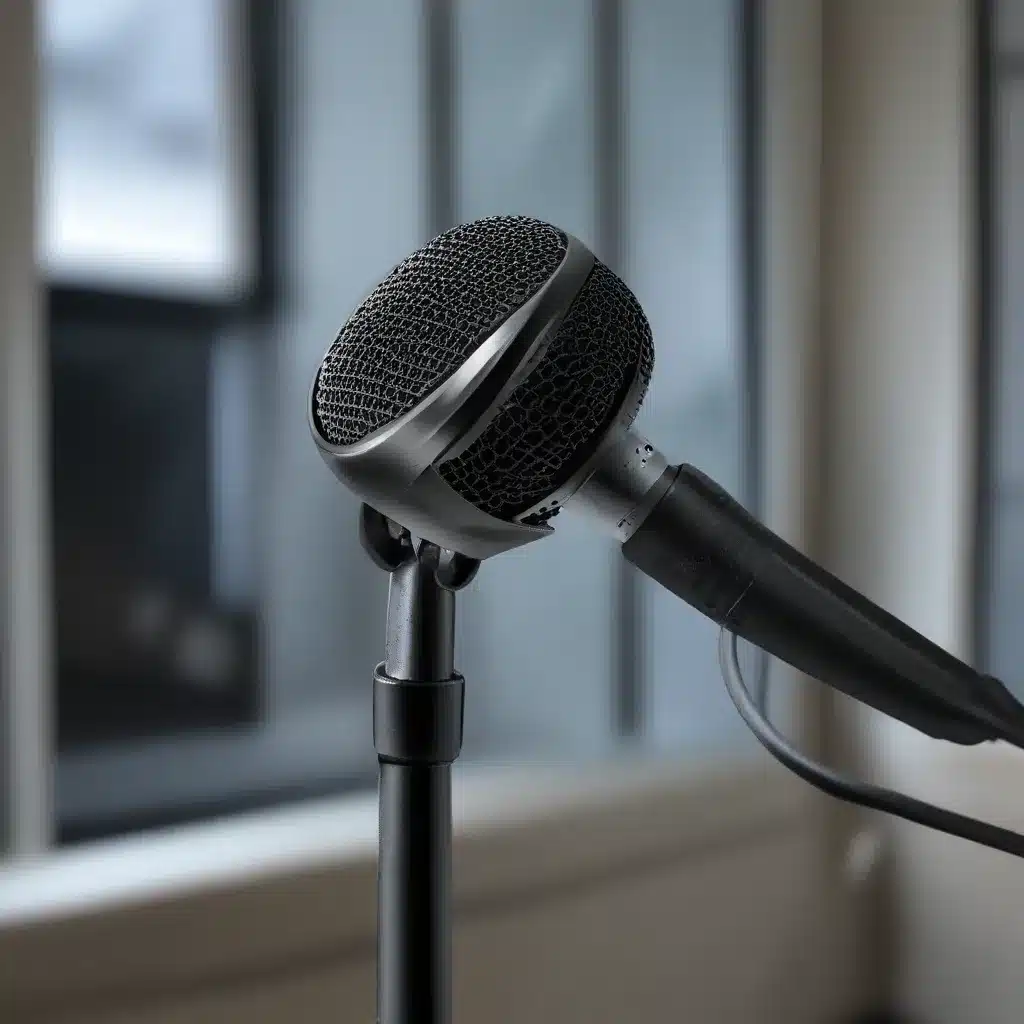
Troubleshooting Microphone Issues: An Adventure in Sound
Have you ever found yourself in a virtual meeting, about to share your brilliant insights, only to discover that your trusty microphone has gone on a secret vacation? It’s a frustrating experience, I know. But fear not, my dear friends, for I’m here to guide you through the treacherous world of microphone troubleshooting in Windows.
Navigating the Microphone Maze
Ah, the microphone – that unassuming little device that can make or break your online interactions. It’s like a loyal sidekick, always there to amplify your voice, but sometimes it just decides to go rogue. Don’t worry, though, we’ll get to the bottom of this and have your mic back in tip-top shape in no time.
First, let’s take a look at the basics. Your microphone or headset should be connected correctly to your computer. If it’s a USB device, make sure the connection is secure. If it’s a 3.5mm jack, give it a gentle push to ensure it’s firmly plugged in. Remember, even the smallest of disconnections can cause a world of trouble.
Now, let’s move on to the settings. In Windows 11, you can access the microphone settings by going to Start > Settings > Privacy & security > Microphone. Here, you’ll want to make sure that the “Microphone access” is turned on and that the “Let apps access your microphone” option is also enabled. This gives your programs the green light to use your microphone.
But wait, there’s more! You’ll also need to check if your microphone is set as the default recording device. To do this, go to Start > Settings > System > Sound, and in the “Input” section, select your desired microphone. Give it a quick test by speaking into it and watching the volume level rise in the “Test your microphone” area.
Unlocking the Microphone’s Potential
If you’ve done all of that and your microphone is still not cooperating, don’t lose hope! There might be a few more tricks up our sleeves.
First, try adjusting the volume of your microphone. In the Sound settings, click on the Properties of your selected microphone and take a look at the “Levels” tab. Here, you can use the sliders to increase the Microphone and Microphone Boost levels. This can help ensure that your voice is being picked up loud and clear.
Now, let’s talk about those pesky apps that just won’t play nice with your microphone. In the Microphone settings, you can choose which Microsoft Store apps can access your mic. But what about those non-Microsoft-Store desktop apps, you ask? Well, you can give them access by ensuring that the “Allow desktop apps to access your microphone” switch is turned on.
Conquer the Microphone Malfunctions
Alright, let’s recap. We’ve covered the basics of microphone troubleshooting, from connection issues to settings adjustments. But what if the problem persists? Well, my friends, we’ve got a few more tricks up our sleeves.
Have you tried unplugging and reconnecting your microphone or headset? Sometimes, a good old-fashioned reboot can work wonders. And if that doesn’t do the trick, you might need to check for any updates or drivers that could be causing the issue. Head over to the manufacturer’s website and see if there are any new drivers available for your microphone or audio device.
And if all else fails, don’t hesitate to reach out to the experts at ITFix.org.uk. They’re the microphone whisperers, the audio alchemists, the sound sorcerers – they’ll have your microphone back in business in no time.
Remember, my friends, a working microphone is the key to a world of virtual adventures. So don’t let a little audio hiccup hold you back. Embrace your inner tech wizard, and together, we’ll conquer the microphone malfunctions of Windows!












